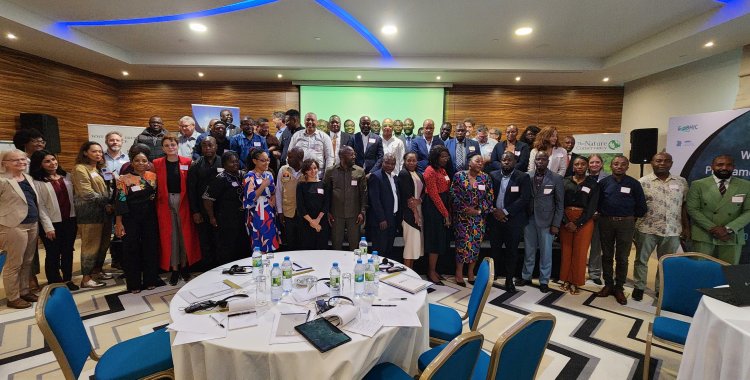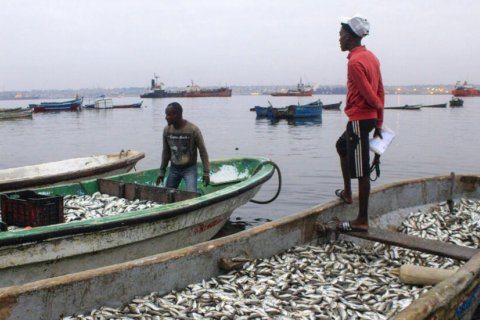According to a statement sent to VerAngola, the initiative – led by The Nature Conservancy (TNC) and the World-Wide Fund for Nature (WWF), the Cunene River Basin Administration Office (GABHIC) and the National Institute of Water Resources (INRH) – aims to protect water sources, "the rezoning of the Mavinga and Luengue-Luiana National Parks", as well as "exploring the establishment of community-based conservation and co-management areas".
In this sense, TNC and WWF have been working on the Southeast Angola Conservation and Water Sources Planning Initiative, "which is gathering a comprehensive set of data and information to support government institutions' conservation plans, so that they can make informed decisions about where, why and how to invest in conservation".
As part of this initiative, a workshop was held in Luanda to "involve stakeholders in improving conservation strategies and defining implementation pathways".
According to the INRH representative, Narciso Ambrósio, given the "rapidly changing conditions", this is a "crucial time for the conservation of pristine water sources" in the southeast of the country.
"Given the rapidly changing conditions, we find ourselves at a crucial time for the conservation of pristine water sources in southeast Angola. Our commitment at the National Institute of Water Resources is to ensure that these vital ecosystems not only continue to thrive but also benefit the communities that depend on them", he pointed out.
"By prioritizing sustainable management and protection measures, we are safeguarding our natural heritage for future generations. This initiative is not just about conserving water resources; it is about preserving our identity, our culture and our common economic future", he added.
At the workshop, GABHIC representative Carolino Mendes said that "act now is needed to implement conservation measures in southeastern Angola that balance environmental and social needs."
"As we move forward with our ambitious conservation agenda, we recognise that preserving our natural resources is not only an environmental imperative, but also a vital component of our national identity and our shared economic future. By safeguarding our biodiversity and ensuring the sustainable management of our ecosystems, we are investing in the health and prosperity of our communities for generations to come," he added.
Also speaking at the event was Colin Apse from TNC, who noted that "unlike many rivers and lakes in the world that are among the most degraded ecosystems, the rivers in southeastern Angola are in remarkably good ecological condition, which means" that we have "a unique opportunity to keep these ecosystems thriving for the benefit of nature and people."
"By investing in the protection of these natural resources today, we can ensure a sustainable future for both people and wildlife in southeastern Angola, and this initiative represents a significant step towards achieving that goal," said the TNC director.
Moses Nyirenda, WWF's Director of Conservation, highlighted the importance of the initiative.
"The health of our planet depends on healthy ecosystems. We must act urgently to protect these vital natural resources not only for wildlife, but also for the communities that depend on them. Sustainable management of our rivers is essential to ensuring water security and biodiversity in Angola," he said.
The two-day Water Conservation Planning in Southeastern Angola and Water Sources workshop also served as a "platform for feedback on the spatial plans that were developed during this initiative."
"The sources of these rivers include the Cubango-Okavango, Cuando and Zambezi rivers, in the Angolan plateau", whose basins are recognised as "one of the five most intact areas of high biodiversity and wilderness in the world", given that their sources support "rich biodiversity, vital wetlands and provide immense social and cultural value", highlighting that by investing in measures for "protection and sustainable management of land use", the country has "the rare opportunity to safeguard these rivers at a relatively low cost compared to their restoration when degraded, while simultaneously promoting nature-based economic activities, such as ecotourism".
It is worth noting that southeastern Angola has "some of the most significant river systems in Africa, contributing around 120 to 150 cubic kilometres of surface runoff per year, or approximately 8000 to 10,000 cubic metres of water per inhabitant per year, according to the Angola IWRM Survey and Status Report".
For example, the Cubango-Okavango basin alone is essential "for the maintenance of a diverse range of wildlife, including one of the largest contiguous populations of African elephants, and provides essential freshwater resources for domestic and agricultural use by local communities", the note adds, highlighting that the country's biodiversity is exceptional, "with more than 1260 endemic plant species and 275 mammal species, such as the famous giant sable antelope, the red buffalo and the savanna elephant", as well as the rivers also have "significant social and cultural value and have untapped potential to support economic development through nature-based industries, such as ecotourism".
However, conditions in the region are changing rapidly, including "proposed river infrastructure such as dams and hydropower diversions, persistent deforestation and an increasing concentration of human activity along major rivers and streams, which could place stresses on freshwater systems."







